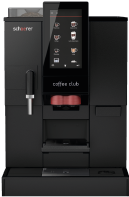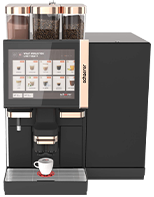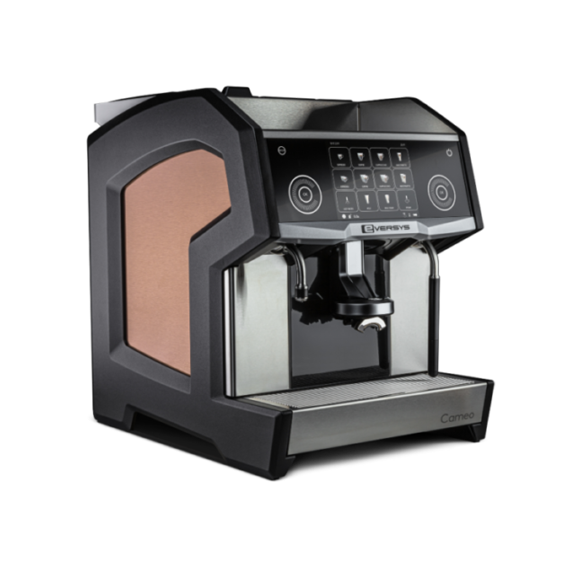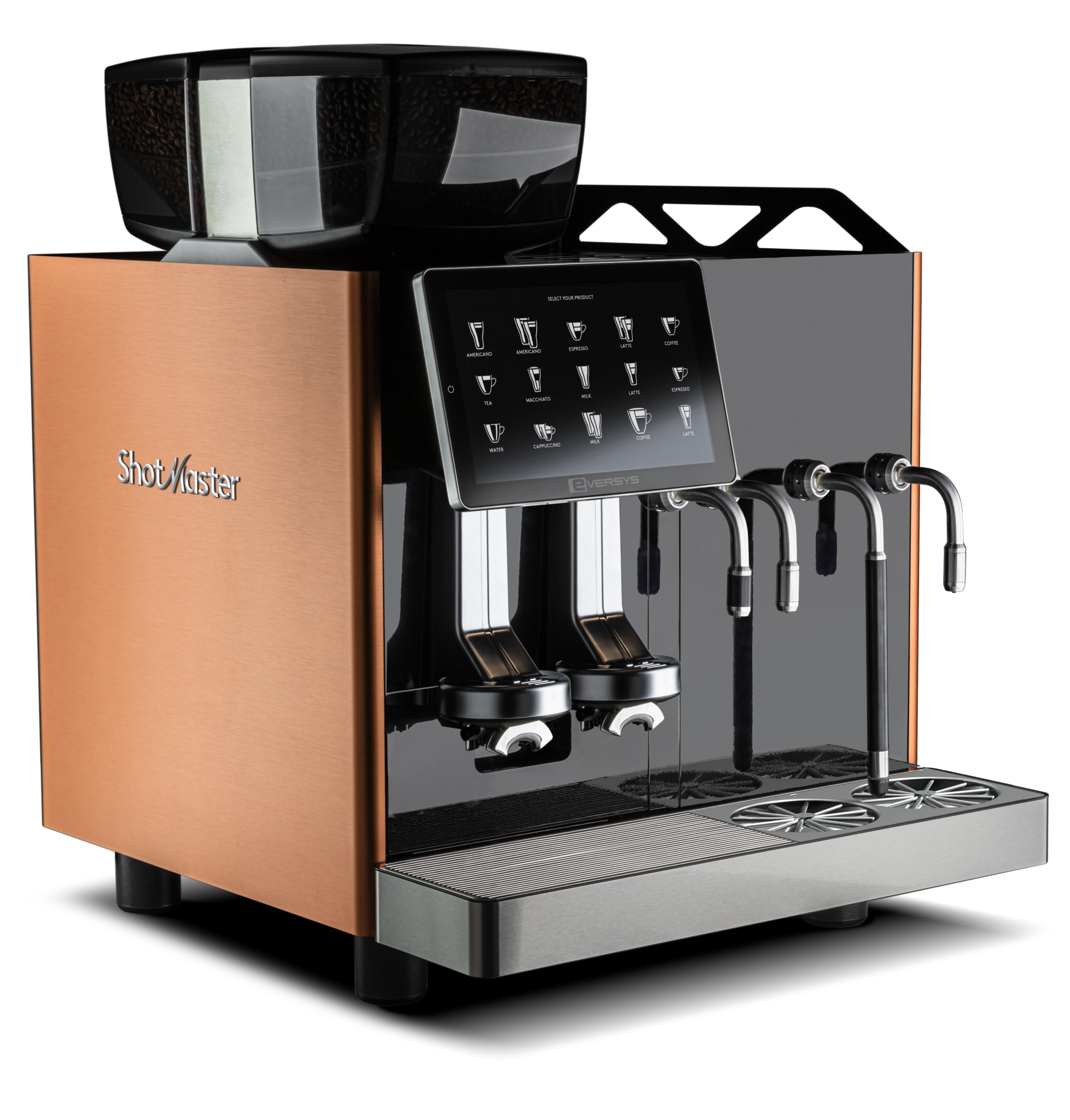Bean-to-cup coffee machines, whilst being the answer to a number of coffee’s issues, are not without their own drawbacks…
Bean-to-cup coffee machines take over the fundamental brewing aspects that go into a cup of coffee from grinding the coffee, adjusting the brew recipe, setting the right temperatures and steaming the milk. Though traditionally bean-to-cup machines have been known to do a poor job of recreating the level of quality from an espresso machine, technology has come on leaps and bounds in the last decade with manufacturers such as Eversys and Schaerer designing reliable machines that brew great coffee.
The number of issues you may experience with a bean-to-cup machine highly depends on the manufacturer and model, with expensive commercial grade machines being much less likely to break down and able to brew better coffee than their cheaper domestic counterparts. That being said, there are a number of common problems that can arise with these types of coffee machines, so let’s figure out how to solve those today.
Incorrect Grind Size
Why is my bean to cup machine making watery coffee?
Grind size is one of the first coffee brewing variables you learn to master when first getting into making espresso. You need to grind the coffee at a size where there is enough surface area to slow down the flow of water just the right amount to extract all the good flavours from the coffee. With a bean-to-cup machine, this is something that is often controlled for you. If the coffee is not ground fine enough, the espresso will be watery and weak, and you’ll be wasting coffee by not extracting all of the flavour out of the machine.
So, if your bean-to-cup espresso machine allows you to adjust grind size, you’ll want to use it to dial in the espresso by grinding finer if it is too weak, or by grinding coarser if it is too strong or bitter. Learn more -> Calibrating a Coffee Grinder for Espresso
However, if your bean to cup machine does not allow grind size adjustments (or it takes over the process for you but isn’t giving good results), you may be able to use the espresso recipe to properly dial in the extraction. If the coffee comes out weak and under-extracted, you could either use less coffee or more water to boost the overall extraction. On the other hand, if the brew is harsh and bitter (over-extracted), you can use more coffee or less water to bring the overall extraction down. Learn more -> A Beginner’s Guide to Espresso Ratios
Solution: Taste the coffee. If it tastes sour and flavourless, try grinding finer, if it tastes too bitter, grind coarser. If your machine does not allow you to change grind size, then you may be able to dial in the flavour of the coffee by adjusting the espresso ratio.
Keeping a Bean-to-Cup Machine Clean
Cleanliness is a difficult one to tackle, because it’s only really an issue when you forget to clean your machine. Bean to cup machines are a little more involved than traditional espresso machines as they have to deal with used coffee grounds and hot and cold milk, so it’s incredibly important to keep than clean.
Bean-to-cup machines are often installed in office kitchens or are bought by people seeking a no-hassle option for their coffee, so cleaning is often forgotten about. The solution here is quite simple, make sure to follow the cleaning recommendations provided by the manufacturer.
Solution: Set reminders to clean the machine, use filtered water, descale with chemicals often. If in an office space, create a rota for cleaning. Or if you’re machine is being leased, make sure the supplier has a team of engineers and trainers to help you look after your machine. Learn more -> How to keep a coffee machine clean.
Before you continue...
The the community of 11,000 learning all about wholesale coffee, gaining valuable industry insight, brew recipe videos and more every fortnight in: The Roaster's Review
Keeping the Milk Fresh
Most bean-to-cup machines will have some form of milk option, whether that’s a small fridge kept next to the machine or simply a small tube which is hooked up to a bottle of milk. Keeping the milk fresh and in date can sometimes cause issues, especially in low-volume settings such as small offices or in the home where the milk can easily be forgotten about and left to go out of date.
This can cause issues with the machine by clogging the parts with gone-off dairy, and making the process of cleaning the machine a little more unpleasant. Also, no one wants to accidentally drink a gone-off latte. Thankfully, many bean-to-cup machines (especially commercial grade machines) come with fresh milk or powdered milk options.
Solution: Make sure you’re keeping the milk in a fridge near the coffee machine and replacing with fresh milk regularly. If that’s not possible, or you foresee that regularly replacing the milk will be a hassle, consider using a powdered milk bean-to-cup machine.
Water Scaling in your Bean-to-Cup Machine
Coffee brewing water is a subject that not many consider, or even like talking about. Not only does the quality, flavour and chemical makeup of your water affect the taste and extraction of the coffee, but also affects the inner workings of your coffee machine.
Limescale is produced when water is boiled and the dissolved calcium stays behind, stuck to whatever hot surface it came into contact with. This can become an issue over time, especially when using hard water, clogging the inside of your coffee machine reducing the water pressure, flow, and maybe even stopping coffee from being brewed at all. Thankfully there are a couple of easy fixes you can implement to reduce the risk of scale build-up.
Solution: Consider using filtered water or even using distilled water with premade packs of coffee water minerals for better tasting coffee and less scaling on your machine. Regularly perform descale cycles using chemicals or an acidic solution according to the manufacturer’s recommendations.
Start with a coffee machine that fits your needs
If you’re currently researching the problems associated with bean-to-cup machines, there’s a good chance you may need some guidance with choosing coffee machine that suits your needs from the get-go. If you would like some no-obligation advice on your next coffee machine purchase, please feel free to get in touch.
Click here to read this article about bean-to-cup machines vs espresso machines. Click here to read this article about finance options when buying a coffee machine. Click here to view all bean-to-cup and traditional coffee machines.






